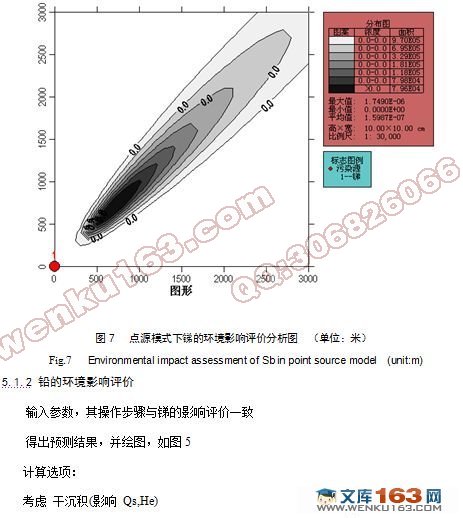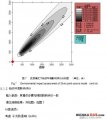锑冶炼行业Sb、Pb、As环境空气质量影响预测与评价
来源:wenku163.com 资料编号:WK1636587 资料等级:★★★★★ %E8%B5%84%E6%96%99%E7%BC%96%E5%8F%B7%EF%BC%9AWK1636587
资料介绍
锑冶炼行业Sb、Pb、As环境空气质量影响预测与评价(10200字)
摘 要:我国是世界上锑矿资源最为丰富的国家,总保有储量为27万t,居世界第1位,锑矿的储量占世界的66.2%。锑冶炼行业在生产过程中会排出大量含污染 物的烟气,尤其是烟尘中所含的重金属元素,如Sb、Pb、As等,对环境影响较大。根据大气监测结果可得出污染物本底值,同时根据其生产工艺计算出相应的 烟气量、排放强度等数据。再结合实际地理气象条件和地形条件,利用EIAA大气评价助手软件对其分别进行高斯点源模式和熏烟模式两种条件下的环境影响评 价,预测污染物排向周围环境中的最大落地污染浓度及影响范围,参照国家相关标准,以此做出冶炼厂废气中排除的重金属元素对环境空气质量影响的相应评价。
关键字:锑;锑冶炼;大气监测;烟气量;最大落地浓度
Prediction and Evaluation of Sb, Pb, As's Impact on Environmental Air Quality in Antimony Smelting Industry
Abstract: China has the richest antimony resources in the world, total reserves to 27 milliont,the amount of antimony ore acount for 66.2% in the world. It can conclude the backgroundvalues of pollutant according to the result of atmosphere monitorating. And calculate the corresponding flue gas, effluent strength and some data according to its production processes at the same time. Value the impact on the environment through the EIAA of gaussian point source mode and smoked mode with the actual geographical conditions and meteorological conditions. Forecast the largest concentration of landing and the biggest landing influence scope about the surrounding environment which affected by pollutant. And referencing to the relevant national standards, make a assessment about the the environment quality, which affected by metal elements out from metallurgical plant. Keyword:Sb;antimony smelting;atmospheric monitoring;quantity ;largest concentration of landing

目 录
摘 要 1
关键字 1
1 前言 2
1.1 锑冶炼 2
1.1.1 国内外近代锑冶炼发展史 2
1.1.2 国内外锑冶炼现状 3
2 锑冶炼工艺流程 3
2.1 原料、燃料和辅助材料 3
2.1.1 原料 3
2.1.2 燃料 5
2.1.3 辅料 5
2.2 锑冶炼生产工艺 5
2.2.1 单一硫化矿、氧化矿的处理 5
2.2.2 脆硫铅锑矿的处理 5
2.2.3 锑白的生产 5
2.3废气处理工艺 6
2.3.1 烟气收尘流程 6
2.3.2 废气治理 6
3 环境空气质量现状监测 6
3.1 大气监测条件 6
3.1.1 样品情况 7
3.1.2 监测方法和主要监测仪器设备 7
3.2 监测结果 7
3.2.1 总铅日均浓度监测结果 7
3.2.2 总砷日均浓度监测结果 7
4 数据处理 8
4.1 计算产生的烟气量 8
4.1.1计算1kg烟煤燃烧产生的烟气量 8
4.1.2计算1kg焦碳燃烧产生的烟气量 9
4.1.3实际产生的烟气量 9
4.2 Sb、Pb、As 日均浓度 10
4.3 烟囱设计 10
4.4 气象条件 10
5 大气软件分析预测 11
5.1 点源模式 11
5.1.1 锑的环境影响评价 11
5.1.2 铅的环境影响评价 15
5.1.3 砷的环境影响评价 16
5.2 熏烟模式 18
5.2.1 锑的环境影响评价 19
5.2.2 铅的环境影响评价 23
5.2.3 砷的环境影响评价 25
6 结论 27
|



